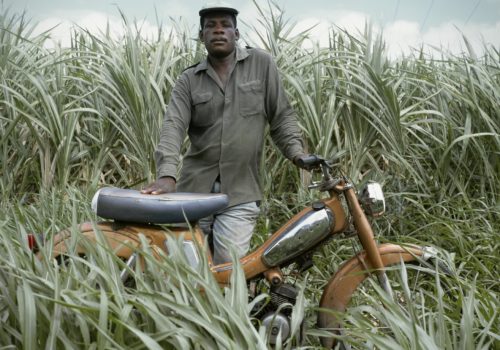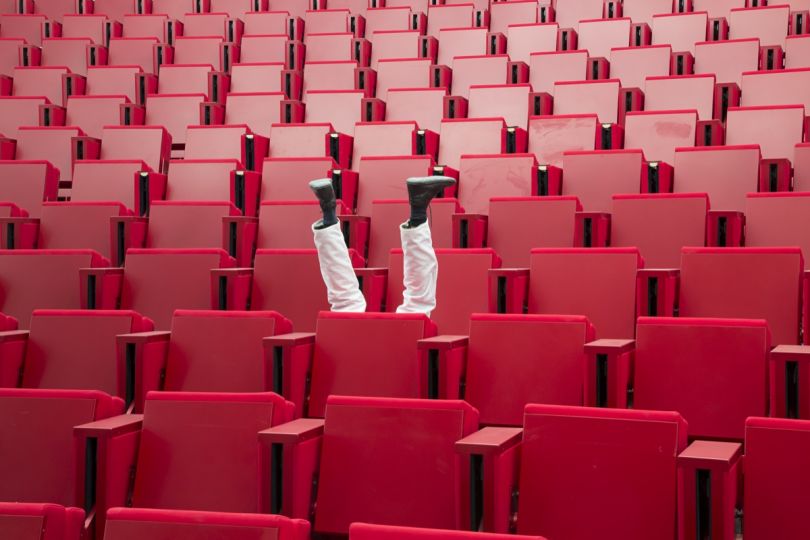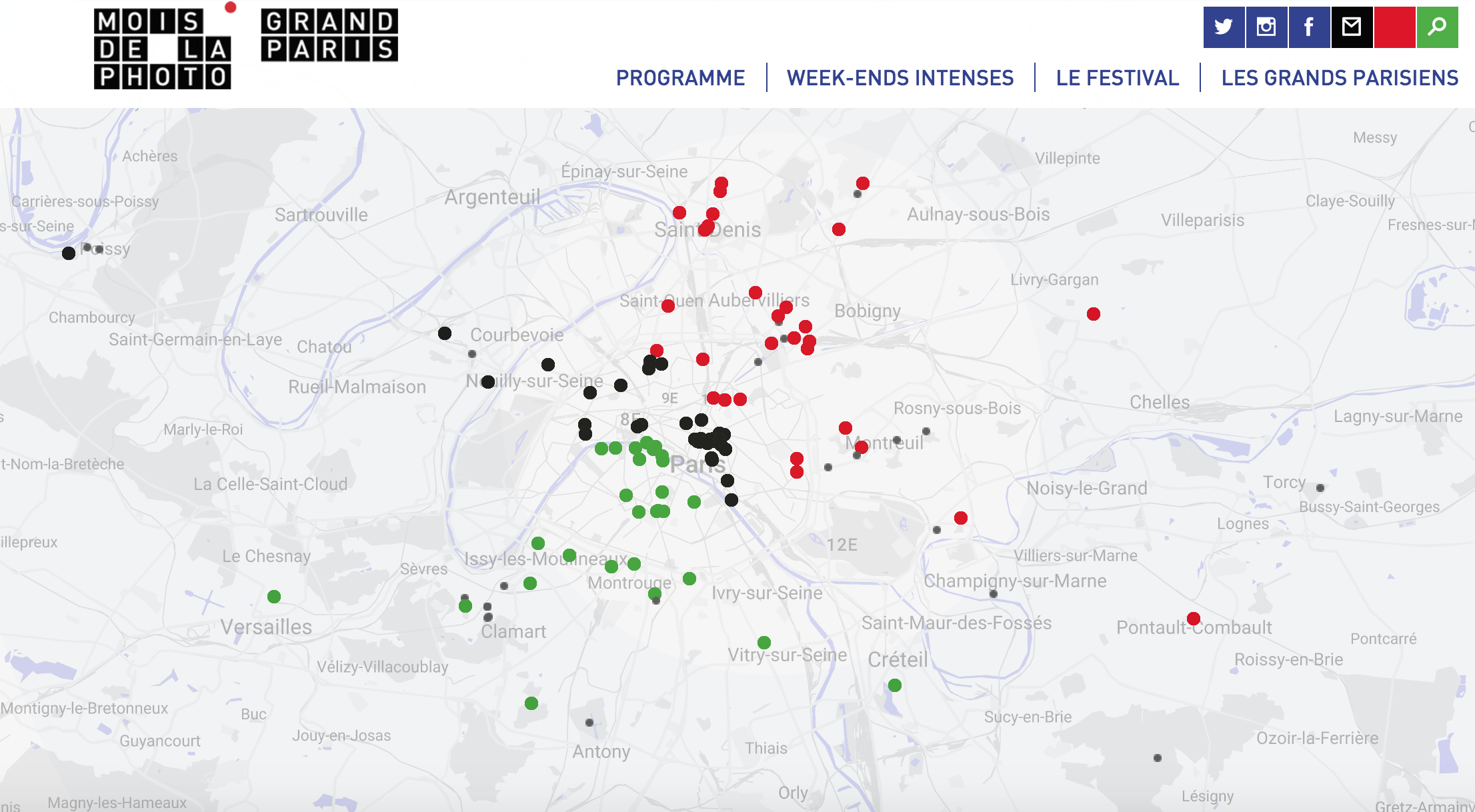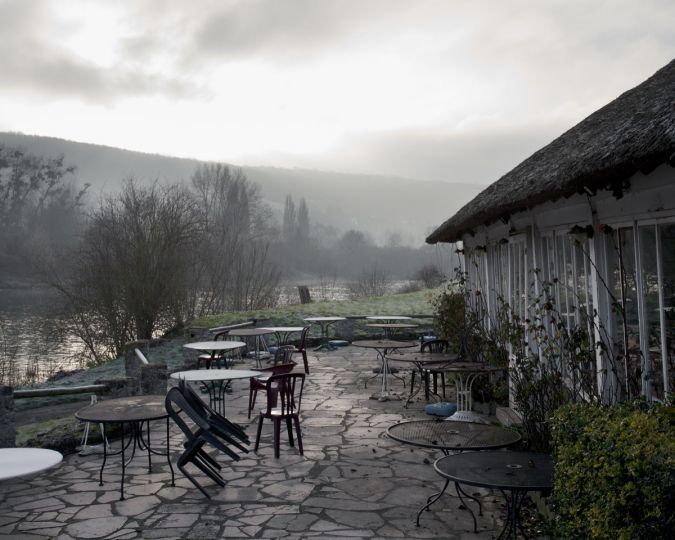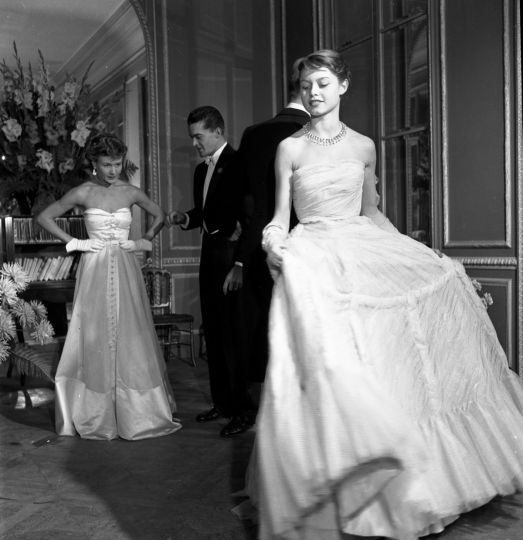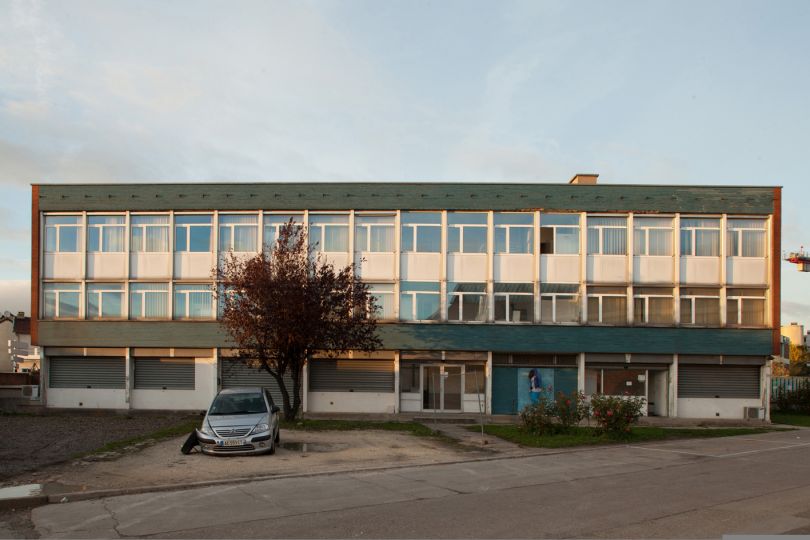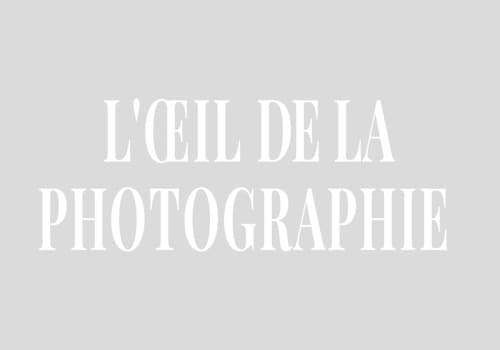It’s hard not to notice that the Mois de Photographie du Grand Paris is in full swing. As its new name indicates, the event has spilled into the outskirts of Paris. We owe this development to the festival’s artistic director François Hébel, an aficionado of architecture and urbanism, who is passionate about the issues of this growing metropolitan area. The Month of Photography lends Greater Paris a fascinating, concrete new dimension. Pantin, a suburb with a burgeoning cultural calendar, where one can see no less than six exhibitions, including two hosted by the municipality, is a case in point. Scattered throughout the town, the exhibitions are an opportunity not only to discover a wide range of photographic production—from contemporary art to documentary photography—but also to make a foray into completely different, yet complementary, neighborhoods.
We start our tour at the Magasins Généraux. Emblematic of Pantin architecture, this enormous warehouse of glass and concrete, sitting on the bank of the canal, is home, as of last year, to the advertising giant BETC. The Magasins Généraux are at the heart of the redesigned Month of Photography: the event launch was held here on Saturday, April 8; the president of BETC, the hyperactive Rémi Babinet, also chairs the Grand Paris Express endowment fund; and a two-part series of portraits of “Metropolitan Parisians” is currently on display at the site. The Grands Parisiens are first of all three professional photo studios. The residents of Paris and surrounding areas are invited to have a family portrait taken under the expert guidance of the photographers. They take away a print, while its twin is put on display. The collection as a whole will constitute an archival record of the experience. The first lively photos were captured by Pascal Dolémieux and Benni Valsson.
Next to these portraits are exhibited Françoise Huguier’s images of twenty-four Greater Paris families, arranged in large mosaics. With her usual insight and empathy, the artist explores the intimacy of people residing in the vicinity of the future train stations of Grand Paris Express, Vitry-sur-Seine in Chatou, Île-Saint-Denis in Chelles, Le Blanc-Mesnil, Villejuif, and Montfermeil. As she moved from one portrait, one situation, or one meaningful detail to the next, Françoise Huguier would capture an artist or researchers at work, scenes from daily life or children at play… During the inauguration, the photographer took the opportunity to praise the town’s involvement: “I am blown away by the town of Pantin: there are posters for the Month of Photography wherever you look.” And she quipped to great applause: “It’s quite astonishing that we’re in the middle of presidential elections and no one has even mentioned culture. As photographers, we are witnesses to the world. I am worried about where photography is heading. Photographers are full of talent and energy, and they are left out in the cold…” The two projects showcased at the Magasins Généraux aim at offering a sociological survey of Greater Paris.
On the opposite bank of the canal, we step into another world with the Pantin branch of the Thaddaeus Ropac Gallery, a temple of contemporary art and a pioneer in art gallery investments in the suburbs. Located in large, elegant brick buildings, the gallery features, at one end, the dark sumptuousness of Georg Baselitz’s oversized paintings, and at the other, the positive vibes of Jack Pierson’s photographs. Born in 1960 in Plymouth, Massachusetts, Jack Pierson lives and works in New York and in Southern California. He presents a sensuous reflection on Wanderlust, the strong desire to travel imbued with German Romanticism. In one of the rooms where, at the artist’s request, the floor was painted in a soothing shade of pink, his large images, made on North Captiva Island off the coast of Florida, evoke the nostalgia for a never-ending summer and communion with nature. His toes sinking in the sand at the water’s edge or vast expanses of the sea against an ever-changing, omnipresent sky: Jack Pierson’s both realistic and almost impressionistic images acquire a very physical material quality when viewed up close—a texture, a velvety, nuanced feel. Pieces of driftwood hung on the wall accentuate this impression of dreamlike luminosity.
Next, we follow the long Rue Cartier-Bresson (I’m not making this up) all the way to the Quatre Chemin neighborhood, the site of a former cotton factory of the same name operated by the photographer’s family until the 1950s. The outside walls and a former dyeing mill—a beautiful, “raw” looking hall named Les Sheds by the city—are hosting a humanist exhibition entitled Bains Publics. The photographers Florence Levillain, represented by the Maison de photographie Signatures, and Laurent Kruszyk, based in Île-de-France, photographed Parisian public baths and their often-impoverished clientele. Focusing on the architecture, sometimes quite imposing, as in the case of the Bidassoa baths in the 20th Arrondissement, Laurent Kruszyk gives us a sense of the place, revealing its function as a temple of hygiene with great precision and insight. Florence Levillain, on the other hand, reached out to those who still frequent baths. In large, sensitive portraits, she takes a close, respectful look at her subjects: “I wanted the viewer to look them in the eye, I wanted them to be beautiful, and to show the surroundings, their gestures. I’ve met some wonderful people,” she said. In her photos, we encounter Joël, Xu, Massoud, Michaël, Julie, Fouhad and Abdullah, Patricia, Ana, and Emil, and their children, each accompanied by a short text telling us who they are, where they’re from, and why they visit baths.
Further down the street, a former car repair shop was opened, again by the mayor, for the exhibition of the work of Gilles Elie-Dit-Cosaque. While location scouting for a documentary film in Guadaloupe in 2004, the photographer saw dozens of people, essentially men of a certain age, all using the same type of moped: the mythical Mobylette Motobécane Chaudron, known as “grena’ ” on the island because of its rustyolor. Gilles Elie-Dit-Cosaque turned this into a photo series and a documentary, Ma grena’ et moi, showing how the moped caught on among the island’s working class in the 1960s and how it’s been lovingly maintained ever since. And as luck would have it, Pantin was where Mobylette was manufactured! Large, lively portraits shot in color, always from the same angle, show the owners posing suggestively with their Mobylette against a familiar background. Below are funny or poetic quotes extracted from the film, like “I only wash my Mobylette with rain water, water from the sky,” or “My grena’, that’s my two legs,” or “Guadaloupe is too small for my grena’. If there was a highway across the sea to Paris, I’d ride there on my grena’.” These quotes give a good idea of the importance this vehicle has had for the Guadeloupe culture.
From there, we walk a quarter mile, back across the canal, to the Centre National de la Danse (CND), a beautiful, austere building in the capable hands of the talented Mathilde Monnier. This is a one-of-a-kind place devoted to artistic experimentation: document unique #1, a destabilizing, vivifying conceptual gesture.Aware of the excess of images and the precious nature of the archive, [the CND] asked the photographer Marc Domage to choose one photograph among the 200,000 images preserved by the [Center].” Marc Domage selected a black-and-white photograph by Anne Nordmann, which shows an Asian dancer, his head lowered in a beautiful concentrated movement. This small-format picture (23.9×17.6 cm, or 9.4×6.9 inches) is hung all by itself on a white wall. Cushions placed on the ground invite the viewer to contemplate it and to read the accompanying booklet: a lovely, well-crafted story composed for the occasion by the artist and the writer Jean-Yves Jouannais. The story develops the connections between dance and war, starting with quotes from Stendhal, Homer, and Xenophon. We move on, our head spinning, deep in thoughts filled with dancing images: the one on display and others conjured by the story.
As the last stop on our tour, we visit Ciné 104 which houses a selection of legendary works by Sebastião Salgado from his series 4000, about dormitory-towns in La Courneuve and Seine-Saint-Denis. These are a dozen images commissioned in 1978 by the city from the then young artist, with the intention of showing a human face of these enormous housing projects built in the 1950s and quickly notorious as centers of social malaise. A caption written by the Gamma agency for the 1978 exhibition “The 4000, grand ensemble”—the titlef which is a double entendre in French, punning on “a large housing estate” and “great together”—described a cosmopolitan population and the photographer’s work in their midst. Salgado photographed the omnipresent concrete, the architecture, the lack of sidewalks, and the people, adults and children, as well as the impression of solitude right alongside life, creating a series that has lost none of its power, its beauty, or its relevance. We’ve now made a full circle: from Metropolitan Parisians of today to those of yesterday…
Anne-Claire Meffre
Anne-Claire Meffre is journalist specializing in photography. She lives and works in Paris, France.
- Les Grands Parisiens, Françoise Huguier and photo studios, until April 30, Les Magasins Généraux, 1 rue de l’Ancien Canal, 93500 Pantin, http://magasinsgeneraux.com,
Open Friday, Saturday, and Sunday 10 am to 7 pm vendredis, samedis et dimanches de 10h à 19h, to register for the portrait studios, visit: http://moisdelaphotodugrandparis.com/portraits-grands-parisiens/
- Jack Pierson, Walking Around, until May 13, the Thaddaeus Ropac Gallery, Pantin, 69 Avenue du Général Leclerc, 93500 Pantin, http://ropac.net
- Florence Levillain and Laurent Kruszyk, Bains Publics, until April 30, Les Sheds, 45 rue Gabrielle Josserand, 93500 Pantin, http://www.ville-pantin.fr/bains_publics.html
The series is also published in Ré-inventaire, a new photography series published by the Île-de-France Region and l’Inventaire. The series highlights the photographic archive of the region and explores the roles of photography in the construction of cultural heritage. Bains Public is the third book in the series.
- Gilles Elie-Dit-Cosaque, Ma grena’ et moi, until April 30, Le Garage, 5 rue Gabrielle Josserand, 93500 Pantin, http://www.ville-pantin.fr/ma_grena_et_moi.html
- document unique #1, until April 29, CND, 1, rue Victor Hugo, 93500 Pantin http://www.cnd.fr
- Sebastião Salgado, Les 4000, until April 28, Ciné 104, 104 avenue Jean Lolive, 93500, Pantin, http://www.cine104.com. Salgado’s photographs were the starting point for the film Les 4000, produced in 2016 by Audrey Espinasse and Sami Lorentz, with the participation of the residents. The film will be screened as part of the project “Filmer la Ville” at Ciné 104 on April 20, in conjunction with a three-part evening organized by LaToileBlanche. http://latoileblanche.org

